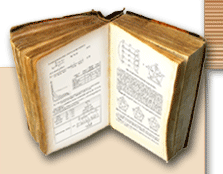








 |
|||||||||||||||||||||||
|
The following data determine the Colombian
Problem: It is necessary to analyse and process these data. Using the populations of 1951 and 1964 to obtain the values of the involved constants, find the exact solution of a exponential growth model. Use the found exponential growth model solution to predict the Colombian population for the year 2100. Using the populations of 1973, 1985, and 1993, find Lagrange's Interpolation Formula of degree two to extrapolate the population of 1997. Keeping in mind the populations of 1973, 1985, and the extrapolated population of 1997 to obtain the values of the involved constants, find the exact solution of a logistic growth model. Use the logistic growth model solution to predict the Colombian population for the year 2100. Using the Method of Least Squares, determine for these data two functions of approximation, namely: Linear Regression, and Exponential Function. Plot the points corresponding to the data table given above and the two functions of approximation on the same coordinate plane. Explain which approximation is better and why. Using both of these two approximation functions, predict the Colombian population for the year 2100. Compare these two predictions with those ones given by the exponential growth model and the logistic growth model solutions. Which of the four found predictions is actually reliable? Explain consistently why. |
||||||||||||||||||||||
| |
|||||||||||||||||||||||